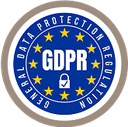
Make confident, data-driven decisions with actionable ad spend insights.
9 min read
They were spending around $4,000 a month on Facebook ads, their Google Analytics dashboard looked amazing, but they were barely breaking even.


Simul Sarker
CEO of DataCops
Last Updated
November 20, 2025
My client's website had 50,000 visitors last February and made 47 sales. That is the moment I realized something was fundamentally broken about the internet.
I run a digital marketing agency, and this e-commerce client came to me last April, absolutely losing their mind. They were spending around $4,000 a month on Facebook ads, their Google Analytics dashboard looked amazing, but they were barely breaking even.
"Maybe your products suck?" I suggested, helpfully. They did not appreciate that.
But then I actually looked at their numbers, and something felt deeply off. It was like walking into your apartment and knowing something has moved, even if you cannot pinpoint what it is. I probably should have left it alone.
Instead, I built a janky tracking script. It was nothing fancy, just a piece of code designed to watch how users actually interact with a page. I tracked mouse jiggles, scrolling speed, the time between clicks, and other subtle behaviors. I was looking for the small, inconsistent signals that make you human versus the rigid, programmatic actions that make you look like a robot pretending to be human.
I installed it on their site with permission. Within a week, my reaction was simple: "Oh no."
A staggering 68% of their traffic was bots. They were not even trying to hide it once you knew what to look for.
Then I got obsessed. This was probably not healthy. I started reaching out to other e-commerce owners. I posted in marketing Discords and Facebook groups with a simple question: "Hey, anyone else's numbers seem weird?" The response was overwhelming. A lot of people said, "Holy shit, I thought it was just me."
Over the next six months, I got permission to track over 200 sites. These were mostly small businesses and some medium-sized stores. Nothing huge.
The average was 73% bot traffic.
I am not talking about Google crawlers or the obvious spam that most analytics platforms already filter out. I am talking about traffic that your analytics dashboard counts as real, engaged human visitors.
The bots are disturbingly good now. They have evolved far beyond simple page-loading scripts. They are designed to mimic engagement to fool standard analytics tools.
I started calling one type of bot an "engagement bot" because I am bad at naming things. These bots actually do stuff. They scroll down pages. They hover their cursors over products. They click around the site.
But here is what gave them away: they are too consistent. A human might spend 15 seconds reading a product description, or 45 seconds, or two minutes if they are really interested. These things spent 11 to 13 seconds on every single product description. Every single time. Across hundreds of sessions.
They scroll at exactly 3.2 pages per second. Every time. Humans do not do that. We scroll fast, slow down, scroll back up because we missed something. Our behavior is chaotic. Theirs is perfect.
One bot I found kept adding the same $47 item to the cart, waiting exactly four minutes, then abandoning it. It did this about 30 times a day across different "sessions." Why? I have no idea. It was probably gaming some metric somewhere.
You know how your analytics shows you got visitors from Instagram or TikTok? A lot of that is just not real.
I tracked referrals from social media platforms and found that around 64% of them would land on the page, wait exactly 1.8 seconds, then bounce. There was zero scrolling. Zero clicks. Just a visit and an immediate exit. But in your analytics, that counts as a visitor from social media, making your campaign look more effective than it is.
I think it is people gaming affiliate links and referral programs. Or maybe it is users trying to inflate their own social media metrics. Honestly, I am not sure. But there are entire click farms running these operations 24/7.
The deeper I looked, the weirder it got. I started seeing patterns that were not just about faking engagement but seemed actively malicious or just plain strange.
I tried bringing this up to a few ad platforms, being vague about which ones. The sales reps were super friendly and helpful until I mentioned bot traffic. Then, suddenly, it was all "our AI detection is industry-leading" and "we take fraud very seriously." This is corporate speak for "please stop asking questions."
One rep I had worked with for years literally said off the record, "Dude, we know. Everyone knows. But if we filtered it properly, our revenue would drop 40% overnight and investors would have a meltdown."
So, we are all just pretending?
The economics are completely broken. One of my clients was spending $12,000 a month on Google Ads. After we implemented better filtering, blocking anything that exhibited these non-human patterns, their reported "traffic" dropped by 71%.
Their actual sales went up 34%.
They were paying for clicks from bots that were never going to buy anything. Their real conversion rate went from "terrible" to "actually pretty good" overnight. They were not bad at marketing. They were just advertising to robots.
This gets darker. I started talking to people in ad tech on background, and they confirmed my fears. There are entire companies that sell "traffic packages." You can buy "10,000 US visitors, engagement optimized" for $400. They send sophisticated bot traffic that looks good in your analytics. Business owners think they are growing. They are not, but the numbers look nice for investor pitches. Competitors also use this to attack each other, sending bots to a rival's site to inflate their ad costs and mess up their analytics.
Pull up your analytics right now. If the numbers feel wrong, they probably are. Look for these red flags:
The more I dug into this, the more depressing it got. I talked to a startup founder who raised $2 million partially based on "user growth" that was 80% bots. He found out after the funding round and is now just pretending everything is fine because what else can he do?
This is the core problem: standard analytics tools are not equipped to tell the difference between a real human and a bot designed to fool them. Ad platforms are incentivized to count this traffic because it inflates their numbers.
But you do not have to pretend. The solution is to stop relying on tools that are so easily tricked. The answer is to implement a system that validates traffic before it ever gets counted. This is where a first-party analytics and fraud validation platform like DataCops becomes essential.
Instead of just counting every "visit," a system like this analyzes the behavior behind the visit. It is built to spot the exact patterns I discovered: the impossibly consistent scroll speeds, the instant bounces from fake referrals, and the device spoofing. It provides "Human Analytics" by actively filtering out this fraudulent bot traffic before it pollutes your data. This ensures the traffic and conversions you send to your ad platforms are from real people, which is exactly what happened with my client whose sales jumped 34% after we cut out the noise.
For anyone who wants to go even deeper into the mechanics of data cleansing, bot detection, and building a reliable first-party data strategy, the DataCops Hub is an excellent resource for educational content.
I genuinely think more than half of all internet traffic is bots at this point, and the percentage is growing. Ad platforms are selling impressions to bots. Businesses are buying traffic from bots. Analytics companies are reporting bot metrics. And almost everyone is just nodding along because if we admit it out loud, the whole house of cards collapses.
But you do not have to participate. You can choose to measure what is real. The first step is admitting you have a problem. The second is getting the tools to fix it.





